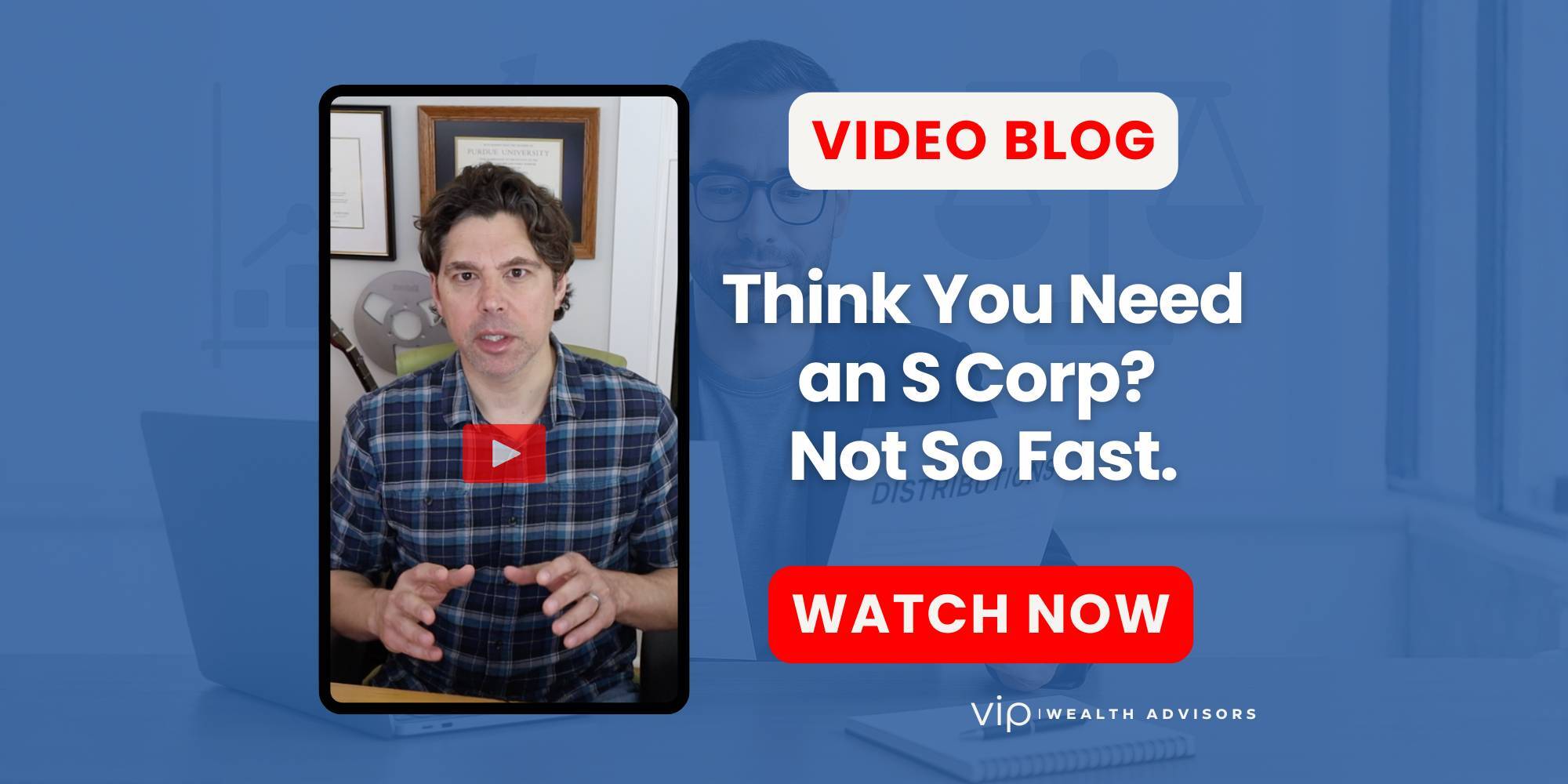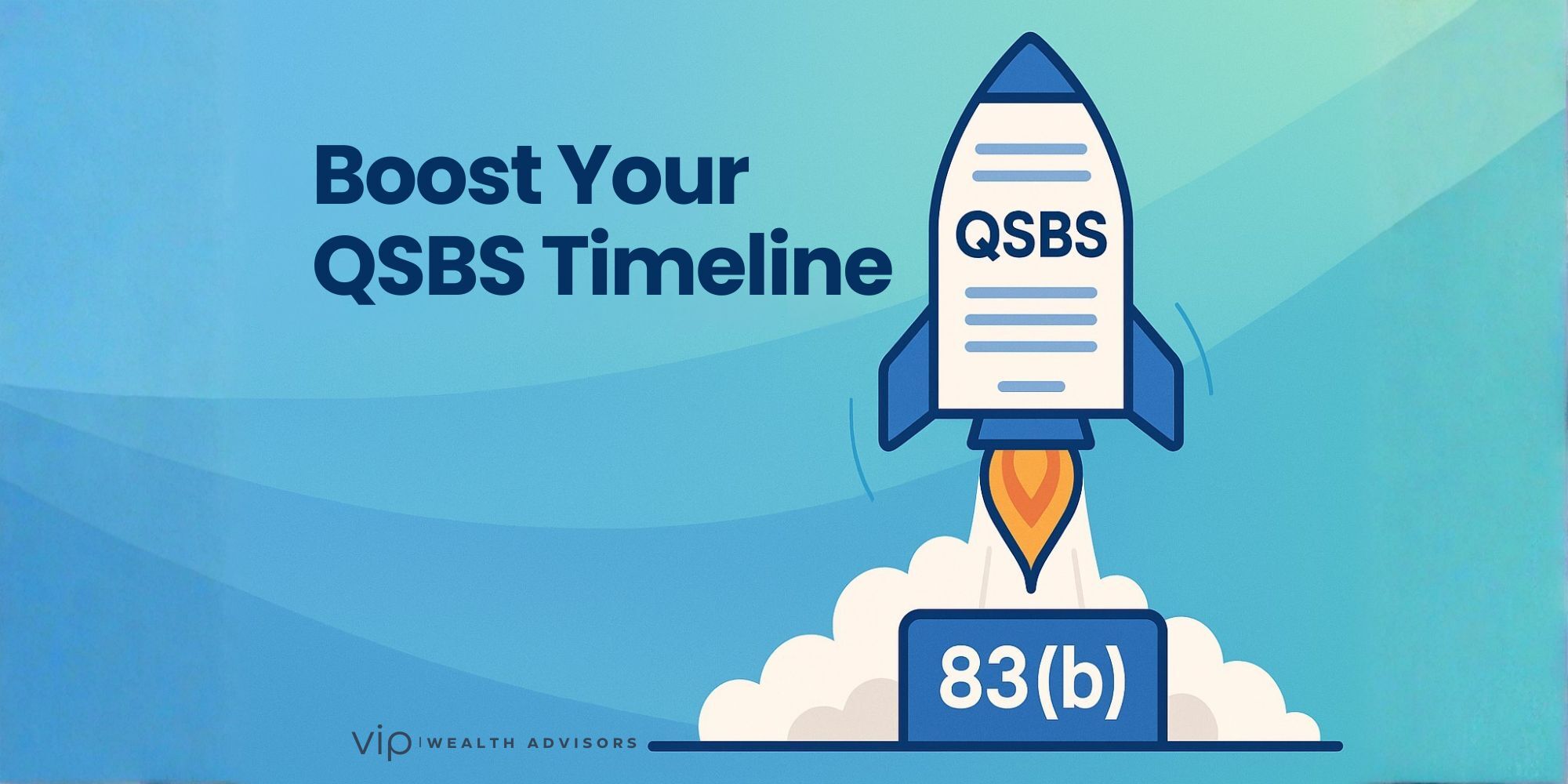Why Business Structure Matters
Choosing the proper business structure is one of the earliest and most impactful financial decisions entrepreneurs make. The choice determines how you pay taxes, how you get paid, and how your wealth compounds over time.
For high-income business owners and professionals, few choices get more attention than the S corporation election. It can unlock significant tax advantages, but only when the numbers truly support it.
This guide walks through everything you should know before filing Form 2553, including a detailed tax breakdown, real-world examples, and when not to elect S status.
The S Corporation isn't a tax loophole; it's a design tool. When used intentionally, it helps high earners structure income more efficiently, reduce payroll tax exposure, and plan wealth around cash flow.
What Exactly Is an S Corporation?
An S corporation is not a separate legal entity; it's a tax classification under Subchapter S of the Internal Revenue Code. Eligible corporations or LLCs can elect S status to be treated as a pass-through entity, meaning profits and losses flow directly to shareholders' individual returns rather than being taxed twice (as with C corporations).
📘 Source: IRS – S Corporations Overview
Tax Treatment: How S Corporations Are Taxed
1. Pass-Through Income
S corporations generally don't pay federal income tax at the corporate level. Instead, all income, deductions, and credits "pass through" to owners. Shareholders report this on Schedule E of their individual Form 1040.
2. Owner Salary (W-2 Income)
Shareholder-employees must receive a reasonable salary for the services they perform. This salary is subject to FICA taxes (Social Security and Medicare), just like any other employee.
3. Distributions (Not Subject to Payroll Tax)
After paying yourself a reasonable wage, remaining profits can be distributed as dividends (Schedule K-1 income). These are not subject to payroll tax - only income tax - creating potential savings.
Example 1: When the S Election Saves Taxes
Scenario:
Jenna runs a digital marketing firm and earns $200,000 in net profit as a sole proprietor.
Option 1 – Stay as Sole Proprietor (Schedule C):
All $200,000 is subject to the 15.3% self-employment tax (Social Security + Medicare).
- Self-employment tax = $200,000 × 15.3% = $30,600
- Federal income tax = based on her marginal rate (say 24%)
Option 2 – Elect S Corporation:
Jenna pays herself a reasonable W-2 salary of $100,000, leaving $100,000 in profit to be distributed.
- Payroll tax on $100,000 salary = $15,300
- Distribution ($100,000) = no payroll tax
Result:
By splitting income between salary and distributions, Jenna reduces her payroll tax liability by roughly $15,300 annually.
Of course, she'll also incur additional costs (payroll, accounting, corporate return), but the net tax savings remain substantial.
Example 2: When the S Election Doesn't Help
Scenario:
Mike, an independent software developer, earns $60,000 per year in net profit and works sporadically between contracts.
If Mike elects S corp status, he still must pay himself a "reasonable" salary - say, $45,000. After accounting for payroll costs, tax prep, and state filing fees, the compliance costs wipe out most (if not all) of the potential savings.
Result:
At lower profit levels, the S election provides minimal benefit and adds unnecessary complexity.
How S Corporations Handle Taxes Across Levels
| Tax Type | Who Pays | How It's Calculated |
|---|---|---|
| Federal Income Tax | Owner | On individual Form 1040 (Schedule E) |
| Self-Employment (Payroll) Tax | Owner's W-2 wages | 15.3% combined (employer + employee) |
| Distributions | Owner | Subject only to income tax, not payroll tax |
| State Franchise Taxes | Corporation | Varies by state (e.g., CA 1.5% franchise tax) |
State Variability:
Some states, like California, Illinois, and New York City, impose additional S-level taxes or minimum fees, reducing total benefit. Always evaluate the federal and state impact together before electing.
When the S Election Makes Sense
✅ Consistent Profitability: Net income of at least ~$150K–$200K often justifies the added complexity.When It Doesn't Make Sense
❌ Low or unpredictable income (under ~$150K).How to Elect S Corporation Status
- File IRS Form 2553: "Election by a Small Business Corporation." File within 2 months and 15 days of the start of the tax year (March 15 for most calendar-year businesses).
- Establish Payroll: Set up your payroll and document your salary determination.
- Maintain Proper Books & Basis Tracking: Record distributions, shareholder loans, and annual basis adjustments. 📘 IRS – S Corporation Stock & Debt Basis
- Stay Compliant Annually: File Form 1120-S, issue K-1s, and follow state requirements.
Common S Corp Mistakes to Avoid
🚫 Paying an unreasonably low salaryVIP Planning Insight: Income Design Matters More Than Labels
The S corporation isn't a magic tax trick; it's an income-design tool. The fundamental strategy lies in aligning your salary vs. distribution split, retirement contributions, and long-term wealth plan to minimize lifetime taxation.
At VIP Wealth Advisors, we model the tax delta between remaining a sole proprietor, electing S status, or converting to another structure entirely. We integrate that analysis into your broader wealth plan, including retirement design, equity compensation, and eventual exit planning.
The Bottom Line
S corporations can be a powerful lever for reducing self-employment taxes and building long-term wealth, but only when they fit your business model, cash flow, and compliance capacity.
Before making the election, evaluate:
- Your expected profit level and salary needs
- Your state's treatment of S corporations
- Your broader financial plan - including exit strategy and retirement goals
If you're unsure whether the S election makes sense for your situation, VIP Wealth Advisors can model the after-tax impact and help you structure your income intentionally.
Frequently Asked Questions
+How do S corporation taxes differ from LLC taxes?
An LLC can elect to be taxed as an S corporation. The main difference is that S corps require a payroll structure and reasonable salary, while default LLCs pay self-employment tax on all earnings.
+Can I change my salary mid-year in an S corp?
Yes, as long as it remains reasonable for the work performed. Adjustments should be documented with corporate minutes.
+Are S corp distributions subject to the 3.8% Net Investment Income Tax (NIIT)?
Generally no, if you're actively involved in the business. However, passive shareholders may be subject to NIIT on their share of income.
+What if I miss the 2-month, 15-day deadline?
You can request late election relief under Rev. Proc. 2013-30 if you had reasonable cause for missing the deadline.
+Can an S corp own another S corp?
No. However, an S corp can own a qualified subchapter S subsidiary (QSub) if it owns 100% of the stock and makes the election.
+Can I still take the Qualified Business Income (QBI) deduction?
Yes! S corp owners typically qualify for the 20% QBI deduction on pass-through income, subject to wage and income limits.
Want to See if the S Corp Election Fits Your Business?
We'll model your after-tax savings, ideal salary, and long-term wealth impact - so you can decide with clarity and confidence.
View More Articles by Topic
- Taxes (73)
- Financial Planning (39)
- Equity Compensation (32)
- Investments (22)
- RSU (21)
- Tax Policy & Legislation (18)
- Business Owner Planning (14)
- Incentive Stock Options (14)
- Retirement (13)
- Psychology of Money (10)
- Real Estate (9)
- AMT (8)
- Alternative Investments (8)
- Pre-IPO Planning (8)
- Estate Planning (7)
- NSOs (6)
- The Boring Investment Strategy (6)
- Capital Gains Tax (5)
- Crypto (5)
- Fiduciary Standard (5)
- QSBS (5)
- Post-IPO Tax Strategy (4)
- 401(k) Strategy (3)
- Private Investments (3)
- Q&A (3)
- ETF Taxes (2)
- IRA Strategy (2)
- Irrevocable Trust (2)
- Legacy Wealth (2)
- Market Insights (2)
- Market Timing (2)
- Stock Market (2)
- Venture Capital (2)
- Video (2)
- AUM vs Flat Fee (1)
- Altruist (1)
- Atlanta (1)
- Book Review (1)
- Charitable Giving (1)
- Education Planning (1)
- International Financial Strategies (1)
- Precious Metals (1)
- QTIP Trust (1)
- Revocable Trust (1)
- Schwab (1)
- Solo 401k (1)








